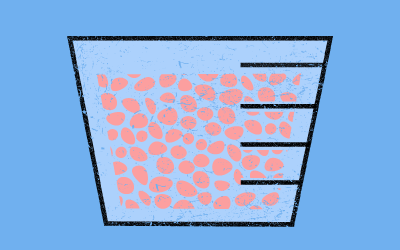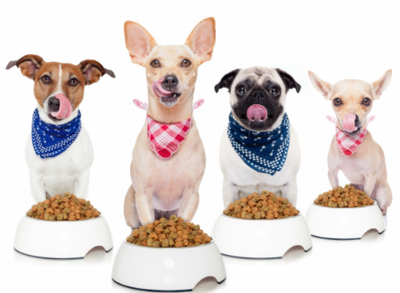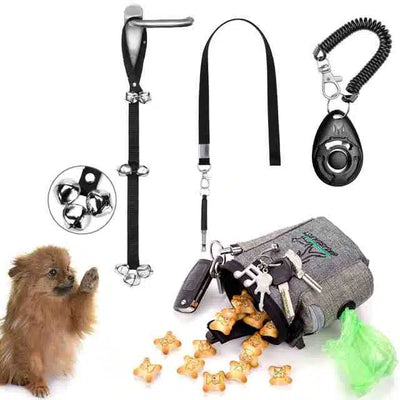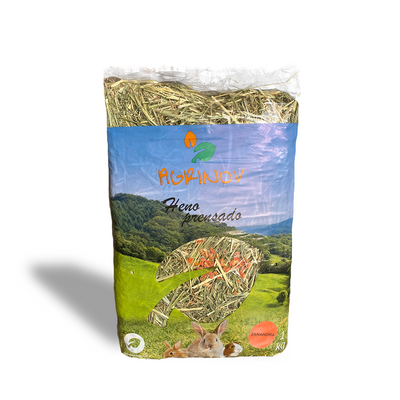The manufacture of dog food is a careful and comprehensive process that guarantees the well-being and health of our pets. To understand how this essential food is produced, it is necessary to delve into the different aspects that make up its preparation, from the selection of ingredients to packaging and distribution.

The ingredients used in the production of the feed are quality controlled and include proteins, carbohydrates, fats, vitamins and minerals. These components are carefully selected and processed, ensuring that the final product is complete and balanced to guarantee an adequate and nutritious diet for dogs.
The feed manufacturing process consists of several stages, such as grinding and mixing the ingredients, cooking and extrusion, drying and cooling. In addition, exhaustive quality control is carried out at each step of the process, evaluating the nutritional quality and safety of the food at all times. Thus, it is guaranteed that the dog food that reaches our homes meets the needs and expectations of owners and pets.
Dog food manufacturing process
The dog food manufacturing process is divided into several stages to ensure quality, nutrition and adequate flavor for our canine friends. Below, we describe each of these stages in detail.

Selection of ingredients: Feed manufacturers carefully select the ingredients that will make up the dog food. Some of the main components include:
- Proteins: meat, fish, eggs, etc.
- Fats: animal oils and fats
- Carbohydrates: rice, wheat, corn, etc.
- Additional nutrients: vitamins, minerals and fiber
Grinding and mixing: In this phase, the ingredients are carefully ground and mixed, providing the ideal texture and consistency for the feed. The use of specialized machinery guarantees a homogeneous distribution of all the necessary nutrients in the food.
Cooking and extrusion: The mixture of ingredients is subjected to a cooking and extrusion process, in which heat and pressure are applied to transform it into a consistent mass. This process facilitates the digestibility and palatability of dog food.
Drying and cooling: After extrusion, the food goes through a drying and cooling process. The goal is to reduce humidity and, at the same time, prevent the development of bacteria and fungi in the final product.
Adding nutrients and flavorings: In this step, additional nutrients such as vitamins, minerals and amino acids, as well as natural flavorings (such as chicken liver and organ meats) are added to improve the taste of the food. It is important to note that all additives used comply with the regulations established by the competent authorities.
Packaging and storage: Finally, the feed is packaged in appropriate bags or boxes and stored in appropriate conditions to guarantee its quality and freshness.

In short, the manufacturing of dog food is a meticulous process that takes into account the health and nutrition of our canine friends. The selection of quality ingredients, the precision in the mixing process and the addition of flavorings and essential nutrients guarantee a delicious and healthy final product for our pets.
Ingredients used in canine feed
When making dog food, various ingredients are used that provide the dog with the necessary nutrients to stay healthy. Among the most common ingredients are:
- Proteins
- Fats
- carbohydrates
- Vitamins
- Minerals

The proteins included in canine feed are essential for the animal, since they provide the amino acids necessary for the growth and development of their muscles. Among the main sources of protein we find:
- Chicken meat
- Veal
- Mutton
- Fish
On the other hand, fats provide the energy required for dogs' daily activities. In addition, they improve the flavor of the food and contribute to shiny hair and healthy skin. The most commonly used fats are those of animal origin, such as chicken fat.
Carbohydrates are another essential component to provide the dog with the necessary energy. These are obtained mainly from cereals, grains, tubers and legumes such as rice, corn, oats, potatoes, sweet potatoes, peas... It is also possible to find fiber, which is beneficial for the gastrointestinal tract and health. dog's digestive system.
Vitamins and minerals are required in small amounts, but they make a big difference in the dog's health. These nutrients are essential for the proper functioning of the nervous, immune and bone systems.
Some additional ingredients could be found in canine food, such as:
- Antioxidants
- Prebiotics and probiotics
- Essential fatty acids (such as those in salmon oil for dogs )
- Chondroprotectors for dogs
Antioxidants help combat oxidative stress and protect dogs' cells, while prebiotics and probiotics promote the balance of intestinal flora and better digestive performance. Finally, essential fatty acids such as omega-3 and omega-6 serve to maintain healthy skin and coat, as well as protect the heart and immune system.
In summary, when manufacturing dog food, a wide variety of ingredients are used, all carefully selected to offer the dog the nutrients it needs in its daily diet. These ingredients work together to ensure the dog's health and vitality throughout the different stages of its life.
Different types of dog food
Our pet's diet is a key aspect to keeping our dogs healthy and full of energy. There are various types of dog food on the market, each one formulated to meet the specific needs of each animal. Next, we will analyze the different types of dog food and their main characteristics:
- Dry food : It is the most common and popular type of dog food. It is made up of dry and crunchy croquettes, which can be of different shapes, sizes and nutrients. This type of feed is practical and economical, but it is important to offer a balanced diet, as it may lack certain essential nutrients and moisture.
- Wet feed : It comes in cans or sachets and has a soft texture and more moisture than dry feed. This makes it more palatable to dogs, but also more expensive and less durable. The moisture content is beneficial for those dogs that suffer from kidney and urinary problems.
- Semi-moist food : It has a similar appearance to dry croquettes, although its texture is stickier and contains more moisture compared to dry croquettes. It may have a shorter shelf life than dry food, but it may be easier for certain dogs to chew and is a mix between dry and wet food. (Link to mediterranean)
- Specialized or dietary feed: This type of feed is designed to meet the specific needs of each dog. Includes formulas for dogs with allergies, intolerances, medical conditions, dogs of specific breeds, ages, sizes, among other factors.
Some main characteristics of the different types of feed mentioned above can be seen in the following table:
|
Feed Type |
Humidity |
Nutrients |
Price |
|
Dry |
Low |
Variable |
Low |
|
Wet |
high |
Variable |
High |
|
Half damp |
Half |
Variable |
Half |
|
Specialized |
Variable |
Specific |
High |
It is important to take into account the following considerations when choosing the type of food for our dogs:
- Nutritional needs of the animal.
- Age, size and breed of the dog.
- Physical activity and health status.
- Budget available.
Furthermore, it is essential to remember that to maintain a complete and balanced diet, it is necessary to consult with a trusted veterinarian, who will guide us on the type of feed most appropriate for the health and well-being of our pet.
Evaluation of feed quality and safety
Evaluating the quality and safety of the feed is essential to guarantee adequate nutrition and protect the health of dogs. Companies dedicated to the manufacture of feed must comply with certain regulations and industry requirements to ensure the integrity of their products.
First of all, it is vital to have high-quality and nutritious ingredients. The selection of these ingredients is carried out following criteria such as freshness and origin. Some of the most common components are meats, vegetables, grains and natural antioxidants.
Companies must also follow manufacturing processes that ensure the quality and safety of the feed, such as:
- Extrusion: Method that allows more efficient cooking of ingredient mixtures and improves digestibility.
- Drying: Reduction of humidity in the feed to prevent the proliferation of bacteria and guarantee its durability.
- Cooling: Reduction in the temperature of the feed after extrusion and drying, avoiding the generation of condensation and preserving its quality.
Ensuring the correct formulation of the nutritional balance is essential to meet the needs of each dog according to its age, size and physical activity. Animal nutrition experts analyze the composition of feed to determine the appropriate amount of proteins, fats, carbohydrates, vitamins and minerals.

Laboratory analysis is essential to ensure that feed meets quality and safety requirements. Microbiology tests and chemical analyzes are performed in search of:
- Presence of pathogens such as Salmonella, E. Coli or Staphylococcus.
- Levels of aflatoxins produced by fungi.
- Chemical contaminants such as pesticides or heavy metals.
To maintain constant monitoring and ensure traceability in the process, companies keep a detailed record of the batches, indicating data such as production dates and expiration times. Additionally, some manufacturers conduct external inspections and audits to monitor and validate compliance with the highest quality and safety standards.
In summary, the evaluation of the quality and safety of the feed is crucial to offer a nutritious and safe final product for dogs to consume. Responsible companies meet established standards and use certified processes to ensure excellence in the production of pet food.
Conclusion
At the end of this article on how dog food is manufactured, it is clear that this process is of utmost importance since it guarantees a balanced and adequate diet for the animals. The main aspects to consider on this topic are summarized below:
- The selection of ingredients is essential in the manufacture of feed, taking into account the quality and nutritional properties that must be met according to the different stages and needs of the dogs.
- There are different types of processes to make feed, extruding being one of the most common due to its speed and effectiveness. Other methods include baking and gelatinization, which are also widely used in the industry.
- During manufacturing, quality tests are carried out and the formulations are adjusted according to their results. In addition, packaging and storage is controlled to guarantee maximum hygiene and preserve the characteristics and quality of the product until it reaches the hands of the consumer.
In summary, the manufacture of dog food requires a rigorous and careful process that seeks to guarantee the health and well-being of our canine friends:
- Proper selection of quality ingredients
- Efficient processes and techniques in its preparation that preserve its nutritional properties
- Quality controls that ensure the correct formulation and storage of the product
Finally, it is important to highlight that the information presented here aims to provide a general overview of how dog food is manufactured. Therefore, owners interested in delving deeper into this topic are recommended to go to professionals or specialists in canine nutrition to obtain more detailed and personalized information about the appropriate diet for their pet.











